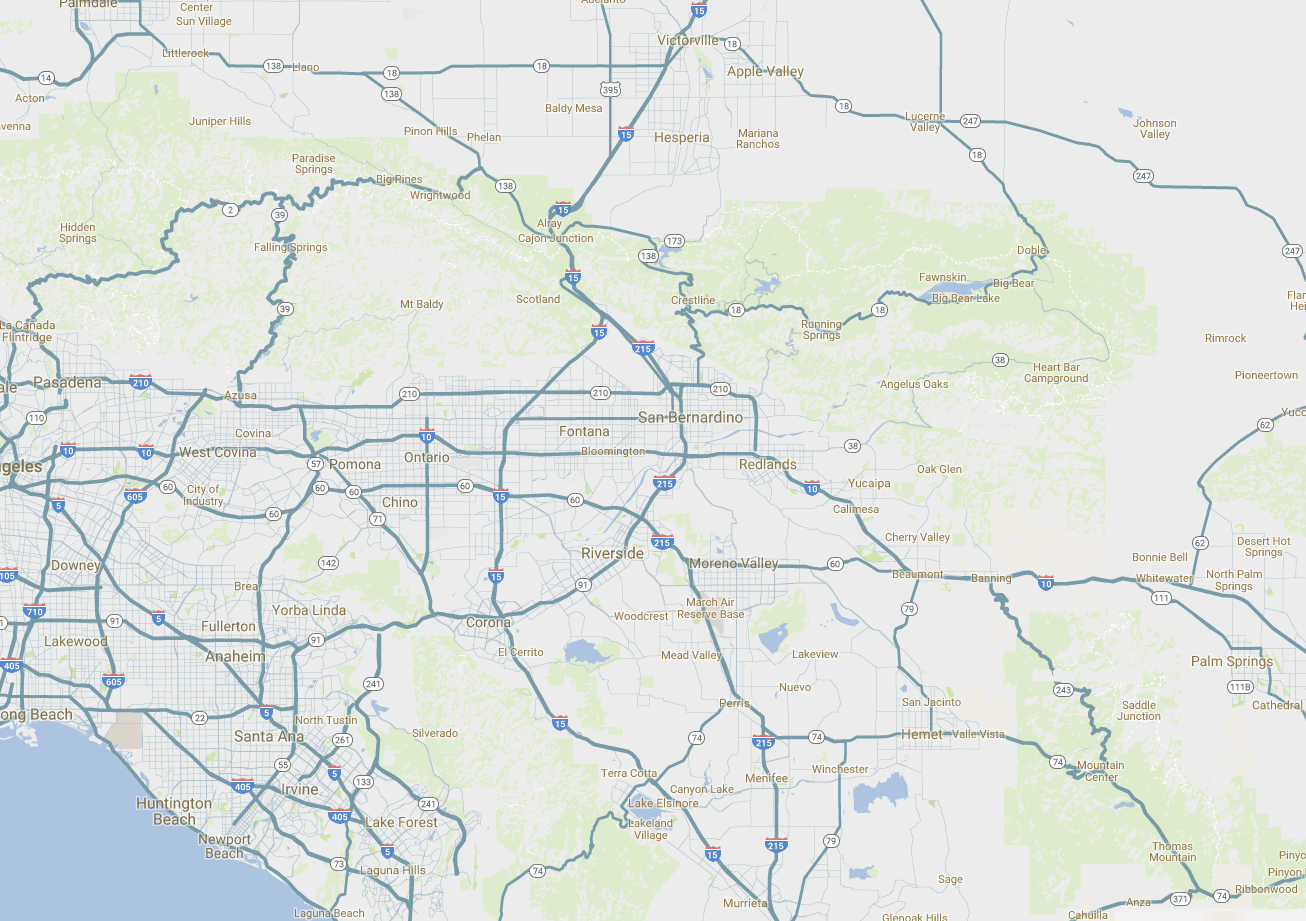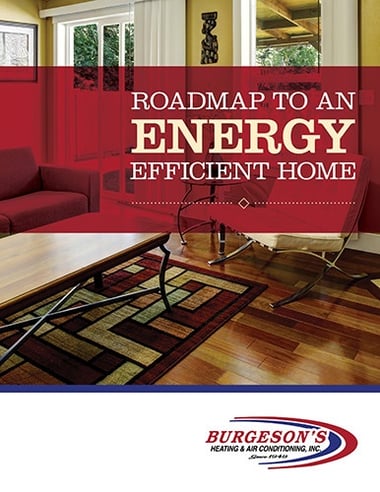What Size AC Do I Need? A Southern California Tech Explains
Choosing the right AC size for your home isn’t just about square footage—multiple factors impact AC sizing, such as insulation levels, number of doors/windows, and your home’s layout. While square footage can help provide a rough estimate, it’s not enough to determine the exact AC size you need.
So, what size central AC do I need? The only accurate way to find out is through a professional in-home evaluation, also known as a Manual J Load Calculation. This calculation assesses multiple variables to ensure your AC system is properly sized for maximum efficiency and comfort.
If you're looking for a quick estimate, an AC size calculator might provide a basic guideline, but it won't account for important factors like insulation, climate, and home layout. To avoid choosing an undersized or oversized unit, it's best to consult a qualified HVAC professional.
In this article, we’ll explain what size HVAC do I need and how professionals calculate the right AC tonnage for your home. But first, let’s break down how air conditioners are sized and why BTUs matter.
Live in the Redlands/Inland Empire area and need accurate AC sizing for your AC replacement project? Contact Burgeson’s, and one of our Comfort Advisors will schedule an appointment for your free in-home estimate.

HOW ARE AIR CONDITIONERS SIZED?
Air conditioners are sized based on how much heat they can remove from your home per hour, measured in BTUs (British Thermal Units). Most Southern California homes need AC systems that provide BTU outputs ranging from 18,000 to 60,000.
Fun fact: One BTU roughly equals the same amount of heat that's produced by burning through one match.
If you’ve been researching “what size AC do I need”, you’ve probably seen the term “tonnage” used instead of BTU output. Don’t worry—tonnage is just another way to measure an AC’s cooling capacity.
For example, one AC “ton” is equal to 12,000 BTUs.
Another fun fact: 12,000 BTUs is the amount of heat required to completely melt one ton of ice (hence the use of “tons” when it comes to AC sizing).
Here’s a tonnage-to-BTUs chart to help you keep track of AC sizing:
|
Tonnage of AC |
BTU Output of AC Unit |
Recommended Home Size |
|
1 Ton |
12,000 BTU's |
200-700 sq ft |
|
1.5 Ton |
18,000 BTU’s |
400-1,000 sq ft |
|
2 Tons |
24,000 BTU's |
700-1,400 sq ft |
|
2.5 Tons |
30,000 BTUs |
900-1,800 sq ft |
|
3 Tons |
36,000 BTU's |
1200-2,100 sq ft |
|
3.5 Tons |
42,000 BTU's |
1400-2,400 sq ft |
|
4 Tons |
48,000 BTU's |
1600-3010 sq ft |
|
5 Tons |
60,000 BTU's |
2000-3,500 sq ft |
HOW ARE AIR CONDITIONERS SIZED?
Picking the right AC size isn’t just about cooling your home—it’s about comfort, efficiency, and cost.
NEED AN ACCURATE AC SIZE? CONTACT THE PROFESSIONALS AT BURGESON’S
- Short cycles – It cools too fast, then shuts off, leading to uneven temps.
- High bills – More energy use means higher costs.
- More wear & tear – Frequent start/stop cycles wear out the system faster.
WHAT HAPPENS IF YOUR AC IS TOO SMALL?
- Non-stop running – It struggles to cool your home, never turning off.
- Weak cooling – Your home never really feels cool enough.
- Higher energy bills – The longer it runs, the more power it eats up.
WHAT HAPPENS IF YOUR AC IS TOO SMALL?
✔ Better comfort – Even and consistent cooling.
✔ Lower energy costs – No wasted power, more savings.
✔ Longer AC life – No overworking, fewer breakdowns.
FOR ACCURATE AC SIZING, YOU NEED A MANUAL J LOAD CALCULATION
A Manual J Load Calculation is the most accurate way to determine what size central AC you need for your home. It measures how much heat your home gains per hour and calculates the precise BTU output needed to keep your space cool and comfortable—even on the hottest summer days.
Many homeowners rely on square footage estimates or an AC size calculator, but these methods don’t account for key factors like insulation, climate, and air circulation. That’s why a professional Manual J calculation is essential—it prevents you from choosing an oversized unit (which wastes energy) or an undersized unit (which struggles to cool your home).
Here are the main factors that impact your AC sizing:
1. GEOGRAPHICAL LOCATION & CLIMATE
- AC sizing varies by region—a home in Southern California will have different cooling needs than one in Minnesota.
- Warmer climates demand higher BTU output while cooler regions require less cooling power.
2. SUN EXPOSURE & HOME ORIENTATION
- Homes with west or south-facing windows get more direct heat and may need a larger AC unit.
- Homes with shade from trees, hills, or nearby buildings have lower cooling needs and may require a smaller system.
3. HOME INSULATION & CONSTRUCTION
- Older homes with poor insulation allow more heat transfer, increasing AC size requirements.
- Modern, energy-efficient homes with proper insulation hold cool air longer, meaning they may need a smaller AC system.
4. WINDOWS & DOORS
- More windows = more heat gain, especially if they’re single-pane or uncoated glass.
- Energy-efficient windows (like double-pane with Low-E coatings) help reduce heat transfer.
- The number of doors also impacts air circulation and cooling efficiency.
5. FLOORING MATERIAL
- Carpeted homes retain more heat, increasing cooling demand.
- Wood, tile, or laminate flooring absorbs less heat, helping your home stay cool naturally.
6. NUMBER OF OCCUPANTS & INTERNAL HEAT SOURCES
- More people = more body heat, which means your AC must work harder to cool the space.
- Homes with kitchens, gas stoves, large ovens, and multiple electronics generate extra heat that must be factored in.
7. DUCTWORK LOCATION & AIRFLOW
- Ducts in unconditioned spaces (like attics or crawl spaces) can lead to cooling loss.
- Well-sealed, properly insulated ductwork improves efficiency and reduces wasted cooling power.
WHY A MANUAL J LOAD CALCULATION MATTERS
A properly calculated Manual J Load ensures your AC system is perfectly sized for your home’s exact cooling needs.
✔ Better comfort—your home stays evenly cooled without hot or cold spots.
✔ Lower energy costs—no wasted power or high utility bills.
✔ Longer AC lifespan—avoids overworking the unit and reduces wear and tear.
If you're wondering, “what size central AC do I need?”, don't rely on square footage estimates or an AC size calculator alone. Schedule a professional Manual J Load Calculation with Burgeson’s today to get the perfect Air Conditioning system for your home.
IS IT THAT BAD TO HAVE AN OVERSIZED OR UNDERSIZED AC?
Yes. The short answer is that an oversized or undersized AC causes high energy bills, less comfort, and a shortened AC lifespan.
We often hear homeowners ask for an oversized AC for increased comfort, but getting an AC that’s too big for the home can cause the opposite. An oversized AC will “short-cycle”, which will turn on and off rapidly. This can cause hot and cold spots throughout the home.
Short-cycling can also result in higher energy bills and frequent repairs.
An undersized AC will run non-stop and likely won’t be able to reach your desired temperature on hot days. This can cause your energy bills to spike and result in frequent repairs.
NEED AN ACCURATE AC SIZE? CONTACT THE PROFESSIONALS AT BURGESON’S
Not sure what size central AC your home requires? At Burgeson’s Heating, A/C, Electrical, Solar & Plumbing, we’ve been serving Redlands and the Inland Empire for over 75 years, ensuring homeowners receive properly sized and expertly installed AC systems.
Unlike online AC size calculators that rely solely on square footage, our professionals conduct a precise in-person Manual J Load Calculation—a comprehensive assessment that accounts for insulation, window placement, occupancy, and other critical factors. This meticulous approach prevents issues associated with oversized or undersized systems, optimizing energy efficiency, comfort, and long-term cost savings.
If you're considering a new AC installation, contact us today. We’ll schedule a FREE in-home load calculation and estimate with one of our experienced Home Comfort Advisors.













